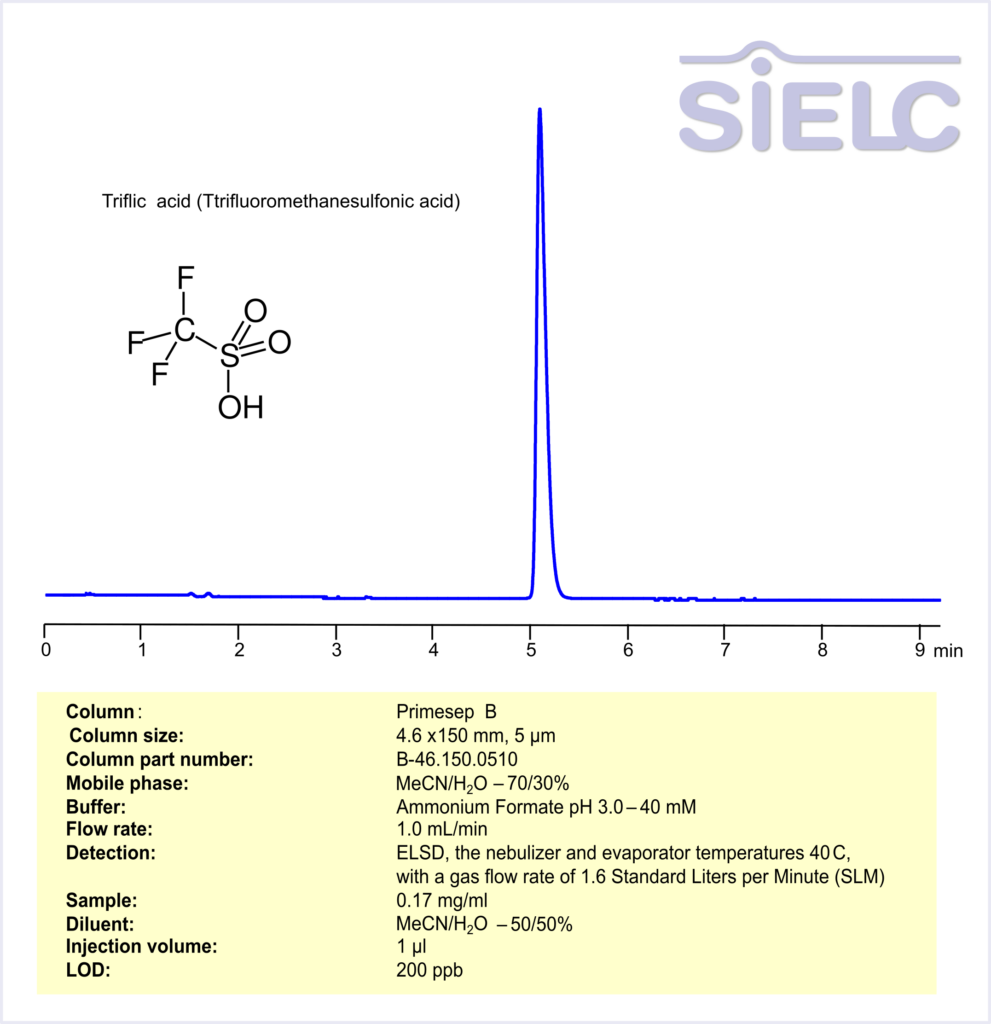
| CAS Number | 1493-13-6 |
|---|---|
| Molecular Formula | CHF3O3S |
| Molecular Weight | 150.08 |
| InChI Key | ITMCEJHCFYSIIV-UHFFFAOYSA-N |
| LogP | 3.3 |
| Synonyms |
|
Applications:
ELSD HPLC Method for Analysis of Triflic acid on Primesep B Column
June 16, 2025
HPLC Method for Triflic acid on Primesep B by SIELC Technologies
High Performance Liquid Chromatography (HPLC) Method for Analysis of Triflic acid
Triflic acid, also known as trifluoromethanesulfonic acid, is a superacid with the chemical formula:
CF₃SO₃H
Common Uses:
- Catalysis:
- Acid-catalyzed reactions (e.g. Friedel–Crafts acylations)
- Polymerizations
- Activation of substrates:
- Converts alcohols into better leaving groups
- Used in making triflate esters (–OTf groups), which are great leaving groups in substitution and cross-coupling reactions
- Superacid chemistry:
- Used as a component of “Magic Acid” (FSO₃H + SbF₅)
Triflic acid can be retained and analyzed using the Primesep B mixed mode column. The analysis utilizes an isocratic method with a simple mobile phase consisting of water, acetonitrile and ammonium formate. Detection is performed using ELSD.
| Column | Primesep B, 4.6 x 150 mm, 5 µm, 100 A, dual ended |
| Mobile Phase | MeCN/H2O – 70/30% |
| Buffer | Ammonium Formate pH 3.0 – 40 mM |
| Flow Rate | 1.0 ml/min |
| Detection | ELSD, the nebulizer and evaporator temperatures 40°C, with a gas flow rate of 1.6 Standard Liters per Minute (SLM) |
| LOD | 200 ppb |
*LOD was determined for this combination of instrument, method, and analyte, and it can vary from one laboratory to another even when the same general type of analysis is being performed.
| Class of Compounds | Acid |
| Analyzing Compounds | Triflic acid |
Application Column
Primesep B
Column Diameter: 4.6 mm
Column Length: 150 mm
Particle Size: 5 µm
Pore Size: 100 A
Column options: dual ended



